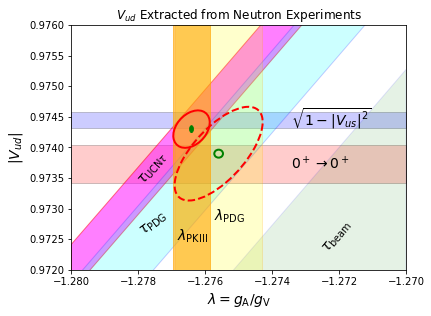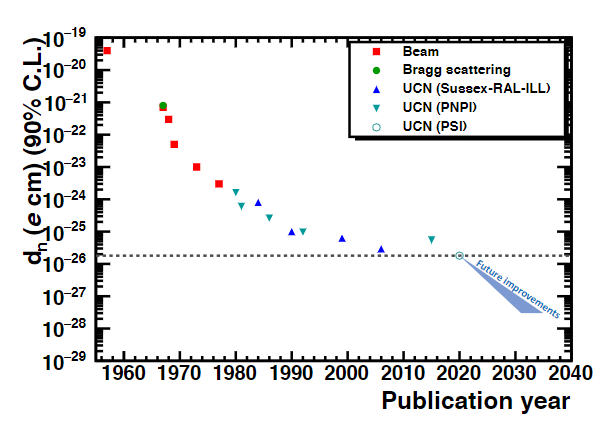Ultra Cold Neutrons (UCN) are free neutrons with kinetic energies up to several hundred nano-eV. Storage of UCN allows for the long observation times needed for precision measurement of many neutron observables. High-precision measurements, confronted with theoretical predictions, probe high-energy physics through loop effects. Ultracold neutrons, due to their very low kinetic energies, can be stored in material bottles or magnetic traps for a duration of up to hundreds of seconds. The long storage time allows for measurements of many fundamental properties of this charge-neutral hadronic system, with improved precision.
Using UCN as the principal tool (but not limited to it), our research group has been developing experimental techniques to measure the neutron lifetime, beta-decay asymmetries, and the electric dipole moment of the neutron. The goal is to reduce experimental uncertainties to a level sufficient to challenge the predictions of the electroweak theory and, by scrutinizing the low-energy neutron observables, to search for long-awaited evidence of physics beyond the standard model of particle physics.
We are leading and contributing to four major experimental efforts in the field of fundamental neutron physics: UCNtau, BL3, nEDM@LANL, and nEDM@SNS.
- UCNtau
- Beam Lifetime (BL3) experiment
- Tritium beta-decay
- Neutron electric dipole moment (nEDM) search
Neutron Lifetime Measurements:
The first two experiments measure the neutron lifetime, using the bottle method and the beam method, respectively. Both experiments are pushing the state-of-the-art to improve the experimental precision, to resolve the neutron lifetime puzzle, i.e., the outstanding 10 s discrepancy in the measured values of lifetime. The UCNtau experiment, led by the PI Chen-Yu Liu over the last decade, culminates this year with the most precise measurement of the neutron lifetime, 877.75 +/- 0.28 (sta)+0.22/-0.16(sys) s [PRL 127, 162501 (2021)]. This result, together with improved measurements of the axial coupling constant through parity-violating asymmetries, provides a determination of the CKM matrix element Vud---independent of nuclear decays---and addresses the recent tension in the CKM unitarity test.

Here is a recent news article about the neutron lifetime research:
“Physicists make most precise measurement ever of neutron’s lifetime. But decades-long mystery of how long the particles live persists.”
Davide Castelvecchi, 15 October 2021. https://www.nature.com/articles/d41586-021-02812-z
Search for the Electric Dipole Moment of the Neutrons:
The last effort on the list measures the Electric Dipole Moment (EDM) of the neutrons using the technique of nuclear magnetic resonance. The search for the T-violating EDM of the neutron has reached, with the latest result from PSI, a sensitivity of 0.0+/- 1.1 (stat) +/- 0.2 (sys) x 10-26 e-cm [Phys. Rev. Lett. 124, 081803 (2020)]. In many scenarios, successful baryogenesis leads to strict lower bounds on the neutron and electron EDMs, only a factor of 2-3 below the current experimental limits. The new generation of nEDM searches will be sufficiently sensitive to provide a conclusive test of the origin of matter in the minimal supersymmetric model. In the US, two efforts are underway: the nEDM@LANL plans to reach 3 x10-27 e-cm with the upgraded UCN source, and the nEDM@SNS aims for < 5 x10-28 e-cm using an innovative cryogenic technique. The construction of the nEDM experiment at the Los Alamos National Laboratory (LANL), being supported jointly by NSF MRI and the LANL LDRD programs, will be completed in 2022.

Figure: Evolution of the nEDM results along with projected future results
Many of the experiments use UCN produced at Los Alamos National Laboratory. Here are some fun videos demonstrating how we use UCN at Los Alamos National Laboratory.
